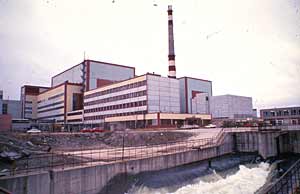
New Managing Director for Bellona Norway
The Board of the Bellona Foundation has appointed former Minister of Climate and the Environment Sveinung Rotevatn as Managing Director of Bellona No...
News

Publish date: May 25, 2000
Written by: Thomas Nilsen
News
Once again Russias Nuclear Minister, Yevgeny Adamov, told the Cabinet that it was important to change the laws in favour of foreign spent nuclear fuel import to Russia. By doing this, Adamov counts on getting funding to fulfil the ambitious investment plan for developing of nuclear industry in Russia in the years to come. Additional funding will come from an increase of the tariff to 1 cent per kilowatt-hour for electricity generated at nuclear power plants. Adamov also suggested diverting a part of gas export profits to support the plan.
Adamov asked the new Cabinet to approve the maximum of 23 proposed nuclear reactors and promised to complete them before 2020. Even with new reactors, Adamov said it would be necessary to prolong the lifetime of the first generation nuclear power reactors in Russia. Many of them have already been in operation for around 30 years, including the two oldest reactors at Kola nuclear power plant in the Russian Arctic. In the next five years, $550 million is required for upgrade and extension of the lifetime for the oldest reactors.
Environmental groups in Russia oppose the nuclear development plan presented in Moscow today. The new nuclear development project worked out by Minatom include 23 new dangerous, expensive and unnecessary reactors, says Vladimir Slivyak, antinuclear campaigner for Ecodefence group. Slivyak also says development of renewable sources of energy could provide Russia with a great amount of electricity, but currently the government does not have any investment plans for such energy.
$3,6 billion earmarked by Minatom for 30 years to tackle the huge waste management problems Russia has encountered is hardly enough. While Minatom is arguing that nuclear waste problem doesnt exist, Russian nuclear plants are contributing to this problem every day, Vladimir Slivyak says. Currently 14,000 tons of spent nuclear fuel from power plants are being generated and stored in Russia. The Minatoms strategy plan outlines the potential for import of another 20,000 tons from other countries.

The Board of the Bellona Foundation has appointed former Minister of Climate and the Environment Sveinung Rotevatn as Managing Director of Bellona No...

Økokrim, Norway’s authority for investigating and prosecuting economic and environmental crime, has imposed a record fine on Equinor following a comp...

Our op-ed originally appeared in The Moscow Times. For more than three decades, Russia has been burdened with the remains of the Soviet ...

The United Nation’s COP30 global climate negotiations in Belém, Brazil ended this weekend with a watered-down resolution that failed to halt deforest...